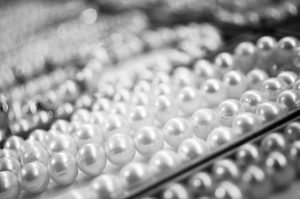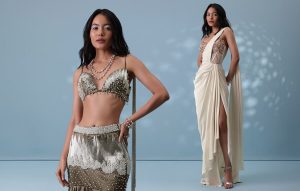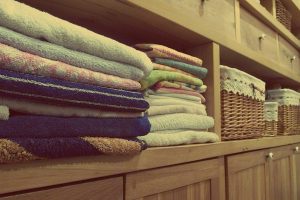Fashion Psychology: How Clothes Affect Your Mood

Fashion has always been a way of expressing oneself through garments and accessories. The phrase “look good, feel better” clarifies how clothing can ensure happiness and give the needed confidence to pull off the day in style. Understanding the connection between wearing something and how it makes us feel is what fashion psychology is all about.
Fashion psychology dives into the complex relationship between clothing choices and our emotions, mental well-being, and behaviours. It’s an important topic for consumers and marketers alike. This topic will dive into fashion psychology, its role, and the connections between fashion and your mood.
What Is Fashion Psychology?
As a branch of applied psychology, fashion psychology explores how fashion affects human behaviour, emotions, and identity. It examines how culture, social norms, and personal values influence our clothing choices. It also looks into how these choices impact our self-esteem and mental well-being.
Using fashion psychology as a marketer can be useful in predicting if consumers will adopt a product and how long it will stay in the market. On the other hand, consumers can use fashion psychology to invest in clothing that enhances their way of expressing themselves positively.
The fashion industry can propel forward by understanding the principles and psychological theories of fashion psychology. From sustainability to marketing strategies, design, and consumer behaviour, it has a role to play in every sector.
The Role Of Fashion Psychology
Here is the significance of fashion psychology and the role it plays in different sectors:
- Consumer Behavior Insights: Helps brands understand purchasing decisions and preferences.
- Marketing Strategies: Informs effective advertising and promotional campaigns.
- Product Design: Guides the creation of clothing that aligns with consumer needs and psychological impacts.
- Brand Loyalty: Enhances customer connection through personalised fashion experiences.
- Sustainability: Promotes eco-friendly practices by understanding consumer values and motivations.
- Retail Experience: Improves store layouts and environments to enhance shopping satisfaction.
- Trend Analysis: Anticipates and responds to fashion trends based on psychological factors.
- Workplace Attire: Advises on dress codes that boost employee morale and productivity.
Connection Between Clothes, Fashion, And Mood
Let’s look into the mechanisms through which fashion impacts our mood and offers insights into how we can harness this knowledge to enhance our daily lives:
The Power Of First Impressions
Whenever you go out, the first impression you make without even speaking is through clothes. You’ll be initially judged on the basis of colours, styles, fit, and much more. It conveys a number of messages to the onlookers about our personality, mood, and status.
It’s better to keep your fashion aligned with your desired self-image whenever you step out. It will help boost your confidence and positively influence how others perceive you. So, it is always advised to dress to impress.
The Science Behind Colors
Colours have a psychological effect that influences our mood and behaviour. As an example, blue is largely used to show that a given product is calm and reliable while red may express feelings of excitement or even aggression.
When we are able to comprehend the psychological effects of various colours, it becomes easier for us to dress in a way that will elevate our moods as well as support our daily activities.
The Role Of Fit And Comfort
How our clothing fits us and whether it’s comfortable significantly helps in elevating our mood. Wearing ill-fitting clothes can cause discomfort and self-consciousness, leading to negative emotions. In contrast, wearing well-fitting and comfortable attire can enhance our mood and confidence.
This is why many people feel more at ease in casual wear than in formal attire, as the latter can sometimes be restrictive.
Symbolism And Personal Identity
Clothing is a powerful form of expressing yourself truly. You become capable of conveying your personal identity, beliefs, and affiliations through it. Wearing clothes that reflect our true selves provides an instant boost to our mood and self-esteem.
To illustrate this scenario, someone who values creativity may feel happier and more authentic in unique and artistic clothing.
The Impact Of Social Context
We tend to dress based on the social situation we are going to be in and sometimes how we feel inside. This tendency can impact the way we think or interact with people. If we go for a job interview and it’s a job that we really want, we’ll probably dress quite formally. That formal attire will make us feel professional and ready.
However, if we’re going to a friend’s house for dinner, then it’s all about being comfortable and relaxed. In that case, casual clothing will be the perfect choice.
Seasonal Affective Disorder And Fashion
Seasonal Affective Disorder (SAD) is a form of depression that’s affected by the change in seasons. Believe it or not, your clothing sense can be of great assistance in minimising the effects of SAD.
For instance, opting to wear bright, cheerful colours during the dreary winter months can help boost your mood and alleviate SAD symptoms. Similarly, choosing to dress in cosy, comfortable attire can make you feel physically and emotionally better during these colder times of the year.
The Influence Of Trends And Media
Fashion trends and the media can heavily influence our clothing decisions. It, in turn, impacts our moods. When you dress in the currently trending styles, you will be able to feel more fashionable and socially connected. However, when you don’t keep up with the trends, feelings of inadequacy may take over.
Also, mixing trends with our personal style and convenience is necessary to ensure comfort. If you want to carry your dress in confidence, fashion that aligns with you is all you need.
Clothing And Professional Life
In the professional realm, clothing can influence productivity and work relationships. When you wear business attire, it can enhance focus and professionalism. On the other hand, casual Fridays promote relaxation and creativity.
Understanding the dress code and its psychological impacts are of big help when you navigate professional environments, ensuring effectiveness.
Personal Case Studies And Anecdotes
Personal experiences can provide valuable insights into how clothing affects mood. For example, consider someone who wears a “power suit” for important meetings. He may report feeling more confident and assertive.
Another person might choose cosy, familiar clothes when feeling down. It may provide comfort and a sense of security. Through these anecdotes, you can see the practical applications of fashion psychology in everyday life.
Conclusion
Fashion psychology reveals that our clothing choices affect our mood and overall well-being greatly. If we understand the psychological principles behind fashion, it can help us make informed choices that enhance our confidence, mood, and social interactions. Our attire has the power to shape our emotional landscape whether through colour, comfort, or personal expression. From understanding the power of first impressions to conveying our personal identity, fashion psychology contributes to making a statement in every manner. That is what makes fashion a valuable tool for enhancing our daily lives.






